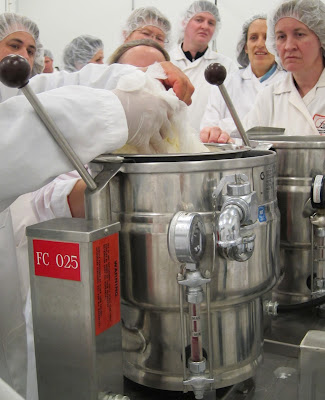Tea - for Health, Happiness, and Eternal Life

Perhaps it was youthful rebellion against my British father and his ever-present pot of tea, but it is only in the past few years that I have begun to drink and enjoy tea. Of course, I still don’t drink it the way my father did with milk and sugar. Instead, I favour jasmine-scented green tea, Earl Grey, and Oolong.
I have just finished reading The True History of Tea by Victor H. Mair and Erling Hoh, which provides a comprehensive, entertaining history of tea.
Tea, Trade, and Politics
Tea and trade and politics are closely intertwined. China has never had many horses, which put them at a distinct disadvantage when they were attacked by northern nomads on horseback. As a result, they established Horse and Tea Fairs where they exchanged tea for horses. The Opium Wars between Britain and China centred on tea as did the Boston Tea Party and American Independence. Interestingly enough, Paul Revere, one of the heroes of American independence was a silversmith designing tea pots and other tea utensils. A teapot he made in 1762 sold for 10 pounds at a time when a labourer’s annual salary was only 30 pounds.
Tea helped fuel the Industrial Revolution as reliance on boiled water greatly reduced the risk of death from cholera and led to population increases. Winston Churchill said that tea was more important than ammunition during World War II and ordered that sailors on board naval vessels be issued tea without restrictions. During the Blitz in London, mobile tea canteens roamed the burnt-out streets serving tea to all in need.
Cultural Ritual
Tea is the basis for cultural ceremonies in many parts of the world. From the billy can in Australia to the samovar in Russia, each culture has developed its own traditions. The Japanese tea ceremony is perhaps the most elaborate, but similar ceremonies have evolved in other countries – from the Vauxhall Gardens and Lyons Tea Shops of England to sugared tea with mint poured from a great height to form a foam in Morocco to tea with yak butter in Tibet.
A special Oolong tea ceremony evolved in Chaozhou in northern Guangdong province in the Qing dynasty. The cups were small as walnuts, the pot as small as a lemon. The water had to come from mountain streams and olive pits were used to fuel the fire. You were to drink slowly, smelling its fragrance and contemplating its taste. “It frees people from restlessness and pacifies arrogance,” wrote Yuan Mei, a Qing literatus.
During the Cold War, it was reported that you could detect a Russian spy by observing his eyes as he brought his tea cup to his lips. “Russian men usually drink their tea in tall glasses in metal holders called podstakannik, and never remove the teaspoon from the glass. When taking a sip, the spoon is pressed by the thumb against the glass, and one eye instinctively shuts as a precaution against injury by the teaspoon’s handle.” The Russian spy may remember to remove the teaspoon, but the reflexive instinct to close one eye would betray him.
Healing Properties of Tea
Over the centuries, doctors and enthusiasts have often touted the medicinal benefits of tea. Following the SARS crisis, Beijing residents replaced their traditional jasmine tea with green tea because of its well-advertised health benefits. But Mair and Hoh conclude their book by saying, “For while nobody denies the beneficial, healing properties of tea, it is not a medicine foremost, but rather a daily ritual, an excuse for a well-needed break, a philosophy, a search for those moments of quietude and companionship when the din of the world subsides and all becomes one. Drink it in that spirit, and health, happiness, and eternal life will follow.”
Over the centuries, doctors and enthusiasts have often touted the medicinal benefits of tea. Following the SARS crisis, Beijing residents replaced their traditional jasmine tea with green tea because of its well-advertised health benefits. But Mair and Hoh conclude their book by saying, “For while nobody denies the beneficial, healing properties of tea, it is not a medicine foremost, but rather a daily ritual, an excuse for a well-needed break, a philosophy, a search for those moments of quietude and companionship when the din of the world subsides and all becomes one. Drink it in that spirit, and health, happiness, and eternal life will follow.”
Postscript
In closing, I would highly recommend tea from Maison de the Camellia Sinensis in Quebec. They go on annual buying trips and purchase their tea directly from farmers in China, Taiwan, and India. The tea tastes great, and I much prefer supporting small-scale operations than mass-produced tea from large corporations.




Comments